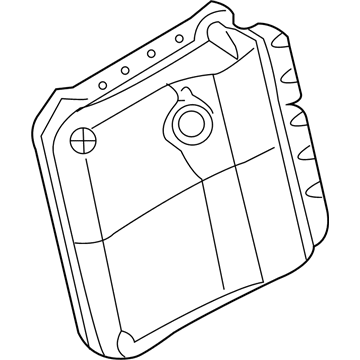×
ToyotaParts- Hello
- Login or Register
- Quick Links
- Live Chat
- Track Order
- Parts Availability
- RMA
- Help Center
- Contact Us
- Shop for
- Toyota Parts
- Scion Parts
My Garage
My Account
Cart
OEM 2009 Toyota RAV4 Engine Control Module
Engine Control Computer- Select Vehicle by Model
- Select Vehicle by VIN
Select Vehicle by Model
orMake
Model
Year
Select Vehicle by VIN
For the most accurate results, select vehicle by your VIN (Vehicle Identification Number).
6 Engine Control Modules found
2009 Toyota RAV4 ECM
Part Number: 89661-0R133$786.88 MSRP: $1153.19You Save: $366.31 (32%)Ships in 1-3 Business DaysProduct Specifications- Other Name: Computer, Engine Control; Engine Control Module
- Replaces: 89661-0R131, 89661-42G11, 89661-42G10, 89661-0R132, 89661-0R130
- Condition: New
- SKU: 89661-0R133
- Warranty: This genuine part is guaranteed by Toyota's factory warranty.
2009 Toyota RAV4 ECM
Part Number: 89661-42Q34$793.47 MSRP: $1162.84You Save: $369.37 (32%)Ships in 1-3 Business DaysProduct Specifications- Other Name: Computer, Engine Control; Engine Control Module
- Replaces: 89661-42Q33, 89661-42Q32, 89661-42Q31, 89661-42J90, 89661-42J91, 89661-42Q30
- Item Weight: 2.20 Pounds
- Condition: New
- SKU: 89661-42Q34
- Warranty: This genuine part is guaranteed by Toyota's factory warranty.
- Product Specifications
- Other Name: Computer, Engine Control; Engine Control Module
- Replaces: 89661-42Q21, 89661-42J81, 89661-42J80, 89661-42Q20, 89661-42Q22, 89661-42Q23
- Condition: New
- SKU: 89661-42Q24
- Warranty: This genuine part is guaranteed by Toyota's factory warranty.
2009 Toyota RAV4 ECM
Part Number: 89661-0R244$783.48 MSRP: $1148.19You Save: $364.71 (32%)Ships in 1-3 Business DaysProduct Specifications- Other Name: Computer, Engine Control; Engine Control Module
- Replaces: 89661-0R242, 89661-0R243, 89661-0R240, 89661-0R241, 89661-0R100, 89661-0R101
- Condition: New
- SKU: 89661-0R244
- Warranty: This genuine part is guaranteed by Toyota's factory warranty.
2009 Toyota RAV4 ECM
Part Number: 89661-0R234$790.74 MSRP: $1158.84You Save: $368.10 (32%)Ships in 1-3 Business DaysProduct Specifications- Other Name: Computer, Engine Control; Engine Control Module
- Replaces: 89661-0R231, 89661-0R230, 89661-0R091, 89661-0R090, 89661-0R233, 89661-0R232
- Condition: New
- SKU: 89661-0R234
- Warranty: This genuine part is guaranteed by Toyota's factory warranty.
- Product Specifications
- Other Name: Computer, Engine Control; Engine Control Module
- Replaces: 89661-42G20, 89661-0R141, 89661-42G21, 89661-0R140, 89661-0R142
- Condition: New
- SKU: 89661-0R143
- Warranty: This genuine part is guaranteed by Toyota's factory warranty.
2009 Toyota RAV4 Engine Control Module
Looking for affordable OEM 2009 Toyota RAV4 Engine Control Module? Explore our comprehensive catalogue of genuine 2009 Toyota RAV4 Engine Control Module. All our parts are covered by the manufacturer's warranty. Plus, our straightforward return policy and speedy delivery service ensure an unparalleled shopping experience. We look forward to your visit!
2009 Toyota RAV4 Engine Control Module Parts Q&A
- Q: How to install the Engine Control Module (ECM) on 2009 Toyota RAV4?A: The 2AR-FE engine control system installs by attaching 4 screws to mount the 2 brackets onto the ECM before connecting both ECM connectors and lowering the levers onto their respective positions. Make sure no debris can reach between connector and ECM and that the levers are dropped properly. Install the ECM bracket along with the ECM next using 3 bolts which need torquing to 6.5 Nm (66 kgf-cm, 58 in-lbf). The air cleaner requires installation by using three bolts that need to be torqued to 5.0 Nm (51 kgf-cm, 44 in-lbf) and clutch connection. Following the alignment of the air cleaner hose protrusion with throttle body edges, secure the filter element inside the air cleaner case by joining the hose while unlocking the hose clamp. The hinge portion of the air cleaner cap should be inserted into the air cleaner case before installing two hook clamps followed by attaching the purge line hose and No.2 ventilation hose and connecting the two purge line hoses to the purge VSV. The system requires connection of 4 wire harness clamps with the purge VSV connector and the mass air flow meter connector. Complete the next part of the installation by attaching the cable to the negative side of the battery. The Vehicle Identification Number (VIN) must be entered during new ECM installation followed by carrying out vehicle stability control system recognition within the new ECM. The final step includes performing a reset memory procedure (A/T initialization) followed by checking the vehicle type.















